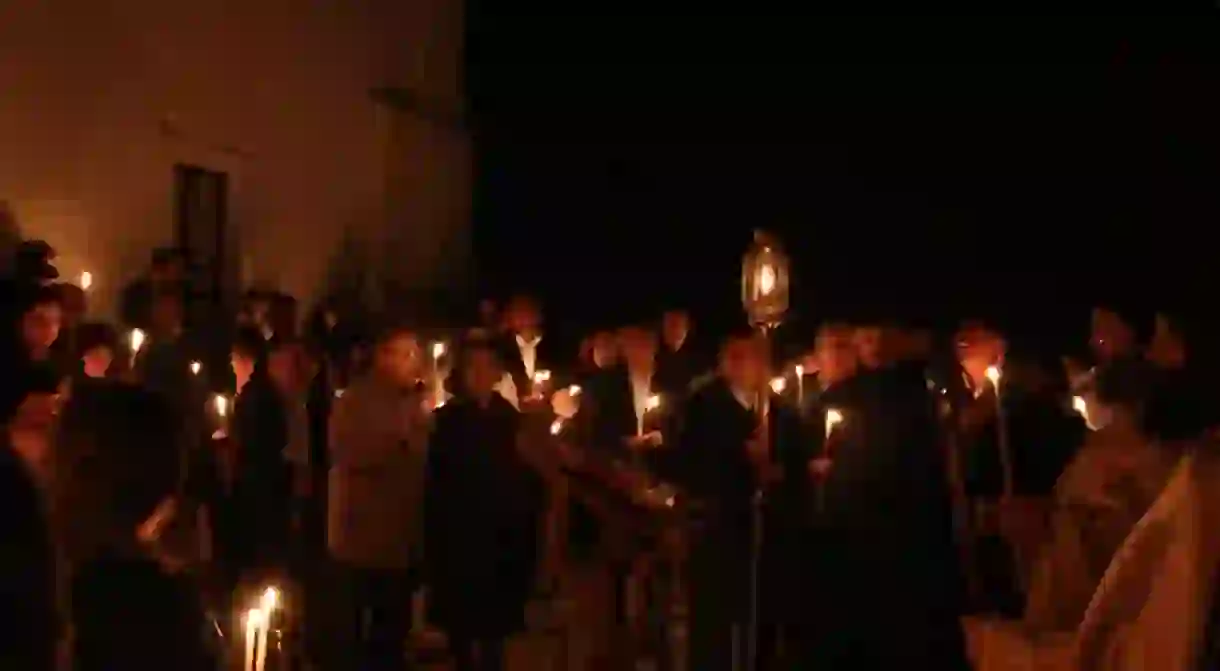Greek Easter Traditions You Should Know

Are you planning to visit Greece during Orthodox Easter? Great news! The country celebrates this special holiday like nowhere else in the world. Here are some of the unique Easter traditions you will witness during your vacation in Greece.
As a religious nation, Greek Orthodox Easter is a week-long celebration that includes a series of festivities. The Holy Week, or Megali Evdomada, is brimming with symbolic events, festivities, and traditions followed by the whole nation, though the serious business begins around Holy (or Maundy) Thursday.
On Holy Thursday
This day is when the Service of the Holy Passion takes place. Preparations for the Resurrection festivities start on that day.
Tsoureki
It is traditionally on Holy Thursday that people make the Easter brioche, also known as tsoureki. This sweet bread is usually braided with three pieces of dough, which represent the Holy Trinity, and spiced with mahleb. It is served with a red hardboiled egg in the middle. Nowadays, people simply buy the tsoureki at the bakery as its preparation is time-consuming.
The red eggs
The tradition of boiling and dyeing eggs in the red color symbolizes the rebirth of life and the blood of Christ.

On Good Friday
The Epitaphios
This special day sees the conclusion of the Passion of Christ with Christ’s burial. On this day, bells ring multiple times throughout the day, and people head to church early to decorate the Epitaphios, a canopy holding the holy icon depicting the burial of the Christ, with flowers. The Good Friday mass takes place in the evening and is followed by a solemn procession around the block of the church in big cities or around the village in rural areas. People usually join the procession, with a brown candle in hand, and chant or listen to the chanters singing the hymns in a somber atmosphere.

On Easter Saturday
The Resurrection Service
On this day, people who haven’t joined in the celebrations usually show up to church for the evening mass. The churches are usually packed, and you will often see people spilling onto the church’s parvis with white candles, which will be lit later with the Holy Light. The Resurrection of Christ is celebrated at midnight sharp; the priest proclaims “Christos Anesti” (Christ has risen) with bells ringing and fireworks lighting up the sky outside. People greet each other with a “Christos Anesti” and its reply “Alithos Anesti” (He has truly risen), lighting their candles along the way. People usually return home with their candles lit or go to the nearby taverna for a Resurrection dinner.

Magiritsa soup
Magiritsa is a lamb tripe soup served after the service. Some people may not like it, but this traditional dish is proof that Greeks traditionally do not waste anything, especially food, and eat the lamb’s tripe the day before roasting the rest of it.
On Easter Sunday
Officially, Easter Sunday is the end of the 40-day fasting period, and it is celebrated with whole lambs roasting on a spit. The Easter meal is a feast for the eyes and the senses.
Tsougrisma
The tradition of tsougrisma, or the cracking of the eggs, can take place on Saturday evening or Easter Sunday, depending on each family’s traditions. It is a fun game for children and adults alike and symbolizes the resurrection of the Lord. The rules are simple. Everyone chooses an egg and cracks it on top of another person’s egg. The one that ends up with a cracked egg is the loser. The game keeps going until there is only one winner, who is said to have good luck for the whole year.
The roasted lamb
Throughout the nation, lambs are roasted on a spit or for smaller families, in the oven. The choice of the lamb is supposed to represent Christ, the Holy Lamb of God. Families spend the day together eating, drinking and celebrating this special occasion with a lot of singing and dancing.

Additional traditions and customs
While many opt for a white candle on Holy Saturday, children usually receive from their godparents a colored candle often decorated with small trinkets.
The Holy Fire, which is used to light the priest’s candle, is brought all the way from Jerusalem, accompanied by high-ranking Orthodox priests and government officials. It arrives in Athens earlier on Saturday, before being distributed across the nation.














